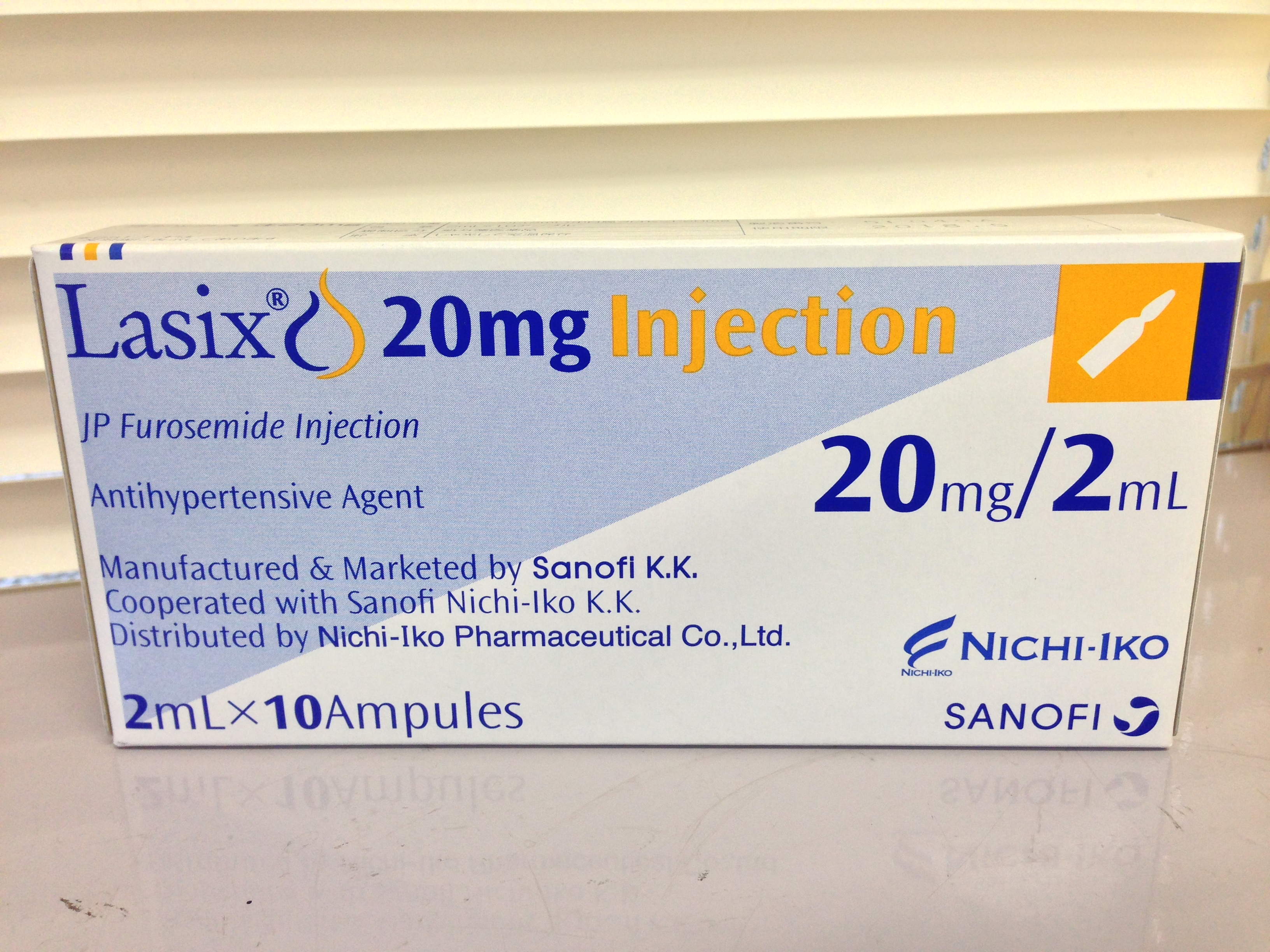|
Meralluride
Meralluride is a mercurial diuretic. In a 1963 study done with rats, it was thought to act on the proximal tubules of the kidneys. Studies in the late 1970s showed the compound had antimicrobial effect against ''Proteus'' bacteria responsible for urinary tract infections, with varying degrees of effectiveness based on the substances mixed with the drug. Published toxicity reports include one patient who "experienced violent delayed febrile reactions after the fifth, sixth, and seventh intramuscular injections of Mercuhydrin". Studies from Japan showed the compound caused ventricular fibrillation in a high percentage of animals when compared to furosemide Furosemide is a loop diuretic medication used to treat fluid build-up due to heart failure, liver scarring, or kidney disease. It may also be used for the treatment of high blood pressure. It can be taken by injection into a vein or by mouth ...; the furosemide was found to be easier to administer to patients in increasin ... [...More Info...] [...Related Items...] OR: [Wikipedia] [Google] [Baidu] |
Mercurial Diuretic
Mercurial diuretics are a form of renal diuretic containing mercury. Although previously widely used, they have largely been superseded by safer diuretics such as thiazides, and are hardly used anymore. History and mechanism Inorganic mercury compounds, such as mercury(I)chloride (calomel), were found to have diuretic properties when they were used to treat syphilis. Proposed use of these compounds date back at least to the 16th century, shortly after the beginning of the syphilis epidemic in 1497 following Columbus' return to Europe. Mercurial diuretics cause diuresis by reducing the reabsorption sodium in the ascending loop of Henle, thus causing more water being delivered to the distal convoluted tubule. Unfortunately, earlier physicians misconstrued hallmark symptoms of mercury poisoning such as excessive salivation as signs of mercury's efficacy, including up until the early 1960s when the use of mercurial diuretics was halted in medicine. Side effects Due to the idiosyn ... [...More Info...] [...Related Items...] OR: [Wikipedia] [Google] [Baidu] |
Proteus (bacterium)
''Proteus'' is a genus of Gram-negative bacteria. ''Proteus'' bacilli are widely distributed in nature as saprophytes, being found in decomposing animal matter, sewage, manure soil, the mammalian intestine, and human and animal feces. They are opportunistic pathogens, commonly responsible for urinary and septic infections, often nosocomial. The term Proteus signifies changeability of form, as personified in the Homeric poems in Proteus, "the old man of the sea", who tends the sealflocks of Poseidon and has the gift of endless transformation. The first use of the term “Proteus” in bacteriological nomenclature was made by Hauser (1885), who described under this term three types of organisms which he isolated from putrefied meat. Clinical significance Three species—'' P. vulgaris'', '' P. mirabilis'', and '' P. penneri''—are opportunistic human pathogens. ''Proteus'' includes pathogens responsible for many human urinary tract infections. ''P. mirabilis'' causes w ... [...More Info...] [...Related Items...] OR: [Wikipedia] [Google] [Baidu] |
Furosemide
Furosemide is a loop diuretic medication used to treat fluid build-up due to heart failure, liver scarring, or kidney disease. It may also be used for the treatment of high blood pressure. It can be taken by injection into a vein or by mouth. When taken by mouth, it typically begins working within an hour, while intravenously, it typically begins working within five minutes. Common side effects include feeling lightheaded while standing, ringing in the ears, and sensitivity to light. Potentially serious side effects include electrolyte abnormalities, low blood pressure, and hearing loss. Blood tests are recommended regularly for those on treatment. Furosemide is a type of loop diuretic that works by decreasing the reabsorption of sodium by the kidneys. Common side effects of furosemide injection include hypokalemia (low potassium level), hypotension (low blood pressure), and dizziness. Furosemide was patented in 1959 and approved for medical use in 1964. It is on the Wo ... [...More Info...] [...Related Items...] OR: [Wikipedia] [Google] [Baidu] |
Mercurial Diuretics
Mercurial is a distributed revision control tool for software developers. It is supported on Microsoft Windows and Unix-like systems, such as FreeBSD, macOS, and Linux. Mercurial's major design goals include high performance and scalability, decentralization, fully distributed collaborative development, robust handling of both plain text and binary files, and advanced branching and merging capabilities, while remaining conceptually simple. It includes an integrated web-interface. Mercurial has also taken steps to ease the transition for users of other version control systems, particularly Subversion. Mercurial is primarily a command-line driven program, but graphical user interface extensions are available, e.g. TortoiseHg, and several IDEs offer support for version control with Mercurial. All of Mercurial's operations are invoked as arguments to its driver program hg (a reference to Hg – the chemical symbol of the element mercury). Olivia Mackall originated Mercurial a ... [...More Info...] [...Related Items...] OR: [Wikipedia] [Google] [Baidu] |
Ethers
In organic chemistry, ethers are a class of compounds that contain an ether group—an oxygen atom connected to two alkyl or aryl groups. They have the general formula , where R and R′ represent the alkyl or aryl groups. Ethers can again be classified into two varieties: if the alkyl or aryl groups are the same on both sides of the oxygen atom, then it is a simple or symmetrical ether, whereas if they are different, the ethers are called mixed or unsymmetrical ethers. A typical example of the first group is the solvent and anaesthetic diethyl ether, commonly referred to simply as "ether" (). Ethers are common in organic chemistry and even more prevalent in biochemistry, as they are common linkages in carbohydrates and lignin. Structure and bonding Ethers feature bent C–O–C linkages. In dimethyl ether, the bond angle is 111° and C–O distances are 141 pm. The barrier to rotation about the C–O bonds is low. The bonding of oxygen in ethers, alcohols, and water is ... [...More Info...] [...Related Items...] OR: [Wikipedia] [Google] [Baidu] |
Ureas
220 px, B vitamin, is a urea. In chemistry, ureas are a class of organic compounds with the formula (R2N)2CO where R = H, alkyl, aryl, etc. Thus, in addition to describing the specific chemical compound urea ((H2N)2CO), urea is the name of a functional group that is found in many compounds and materials of both practical and theoretical interest. Generally ureas are colorless crystalline solids, which, owing to the presence of fewer hydrogen bonds, exhibit melting points lower than that of urea itself. Synthesis Ureas can be prepared many methods, but rarely by direct carbonation, which is the route to urea itself. Instead, methods can be classified according those that assemble the urea functionality and those that start with preformed urea. Assembly of N-substituted urea functionality Phosgenation entails the reaction of amines with phosgene, proceeding via the isocyanate (or carbamoyl chloride) as an intermediate: :COCl2 + R2NH → R2NC(O)Cl + HCl :COCl2 + RNH2 ... [...More Info...] [...Related Items...] OR: [Wikipedia] [Google] [Baidu] |


